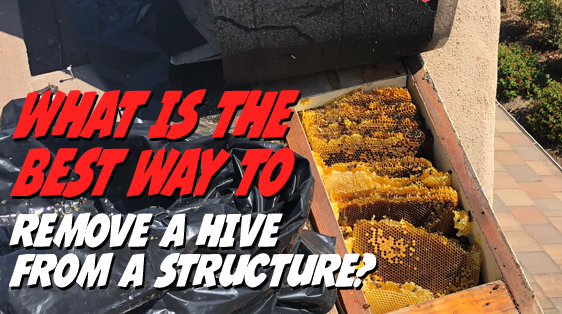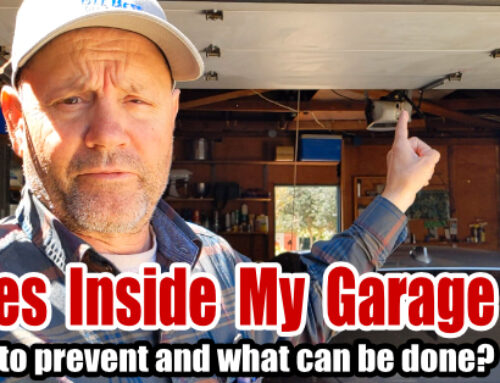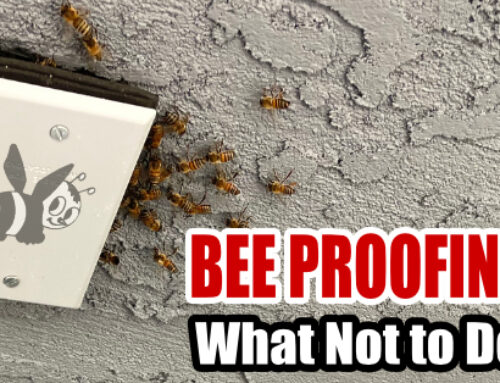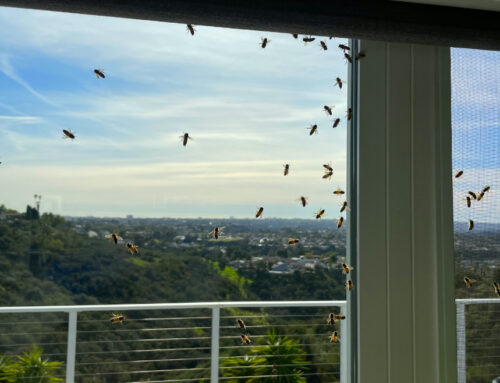If you are here reading this blog post, you may have just received some bad news. Perhaps you just found out that there are bees inside the structure of your home. Even worse, maybe the bees have already built a hive inside the wall or roof. What a bummer!
No one likes to find out that bees have built a hive inside the structure of their home. It is often a very expensive problem to fix. Why is this? Mainly because if the bees have been inside long enough to build a hive, the only way to remove the hive is by opening up the roof, wall, or floor to extract it.
What this means is that a power tool (saw, chipper, etc) needs to be powered up in order to open the structure. This is often the only way to gain access to the hive. Yikes! No one likes to receive this news. The thought of having to open up a roof is upsetting to some home owners, especially if it is a new or specialty type roof.
So what is the best way to remove a hive from a structure? The answer depends on where the hive is located. Let’s break it down by location.
Hives in a Roof
If the hive is inside the roof, it is often located in an attic, hanging down inside a crawl space. The best way to remove hives from a roof is by opening the roof on the exterior. It is very common that many homeowners do not want their roof opened. They often ask us to remove the hive by crawling inside the attic. Although it is understandable that a homeowner would prefer it this way, it really isn’t the best way to perform the removal.
Here are the reasons why: Going in through the attic crawl space is dangerous. Often it is unstable footing. There is risk that the technician may fall accidentally and have their foot go through the ceiling! Also there is risk to damage to any electrical wires & water pipes.
Another danger of removing a hive from an attic is the heat. Attics are very hot. Combine that with the fact that the technician will be wearing a bee suit, and you run a risk of heat stroke.
Also, may times the angle of the rooftop makes it impossible to gain access to the hive. There are simply some hives that can not be reached if they are located in a crowded corner of the attic. You would need a very talented and flexible technician (who is able to pull off some very advanced yoga moves in a bulky bee suit) in order to get the job done this way.
Hives in a wall
Hives can be in all types of walls. Brick walls, wood walls, and even stucco walls. Whenever the hive is inside a wall, the best way to remove it (in most cases) is by opening up the wall on the exterior.
Here are the reasons why: Going inside through the drywall poses risks to the inside of the home. Bee hive removal is messy. You have technicians in their bee suits who may track dirt in and out of the home by accident. Then you have the risk of bees getting inside the home. Even if you have an elimination performed prior to the hive removal, there are usually some straggler bees that are sniffing around while the hive is being removed.
The last thing we want is to bring the bees inside the home. Also, in order to control the dirt, honey, and bees on the inside, a very thorough setup of plastic liners is required to keep everything protected. On top of all that you still have a repair to the drywall which often requires paint matching and sometimes texturing.
Hives under a floor
Whenever a hive is located under a floor or porch, it is usually located in a crawlspace under the house or deck. Often, a homeowner will request that we go under the crawl space to remove the hive. Unless you can completely stand up under the crawl space, it is usually not the best way to remove the hive. So what is the best way? The best way to remove hives from a floor is from above the hive. The main reason is that underneath, there is usually very limited movement. Having a technician crawl on hands and knees in a bulky bee suit usually isn’t feasible. In addition to that, there are challenges working below the hive while trying to remove it. The main challenge is that honey can drip down on top of the technician. With limited space to angle arms, it is very hard to scrape and gain control of the combs of the hive.
It’s all about the positioning. When removing a hive, you really want to be above it, in order to remove it properly. The better control you have over scraping off the hive, the less risk of damage from honey running and dripping inside the structure. From the top, it is much easier to get a good grip on the combs and prevent honey dripping.
As you can see by now, the best way to remove a hive from a structure is usually from the exterior. There are however, some exceptions. Sometimes it is not feasible to open on the exterior. Sometimes the costs of doing it on the outside are way more expensive than the cost of the extra precautionary work needed to do it from the inside. For example, replacement parts for rock and/or block wall exteriors may be near impossible to order or replace. Slate roofs are prone to breaking easily and extremely difficult to work on. Older homes with custom tiles that are no longer manufactured can also be tricky when considering the cost of repair. Aside from these exceptions, removing from the exterior is almost always the best way to remove beehives from a structure.







